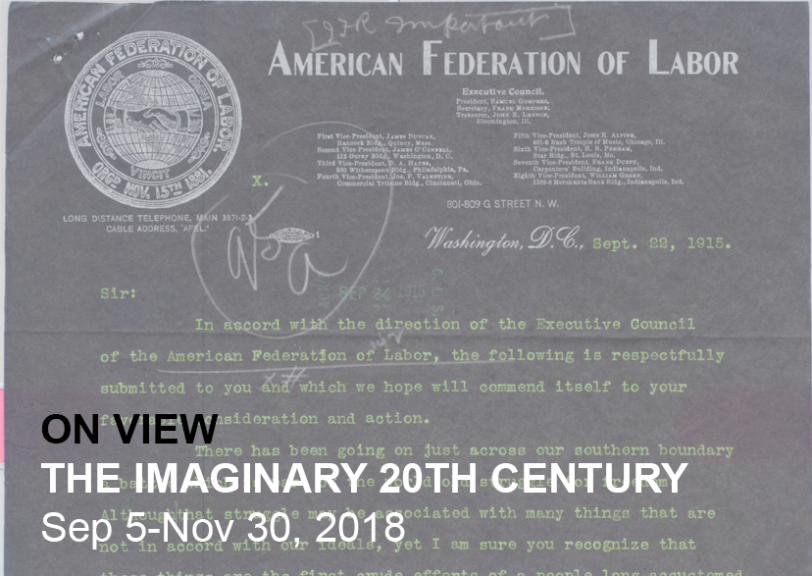The Imaginary 20th Century
September 5, 2018 to November 30, 2018

In 1901, a young woman, while traveling in Europe, selected four men to seduce her,
each with a version of the new century. At least this is how the legend comes down to
us. Inevitably, the future spills off course. Gradually the reader discovers that Carrie’s
misadventures with her suitors were implicated in her uncle’s world of business and
espionage. For over forty years, Harry Brown was hired to erase crimes for the oligarchs
of Los Angeles and the banking industry of New York. A pioneer in how to troll, hack,
and manipulate the truth for his clients, Harry often used American myths of progress
and future technologies in the cover-ups. As he liked to say, fiction is more believable
than fact, and espionage is a form of seduction.
In 1917, Harry began to assemble a massive archive of his niece’s life and legend.
Completed in 1936, the archive records his obsession with Carrie, and also the various
moments in twentieth-century world history when he intervened. The remains of the
archive were unearthed in 2004 in Los Angeles. Thereafter the federal government
allowed a few scholars to study and decode it.
Within the labyrinth of the archive—the illustrations that Harry clipped, the news stories
with which he amused himself, the intimacies from Carrie’s life—there were classified
government documents that his agents had intercepted. They reveal President Woodrow
Wilson's secret policies toward organized labor and toward the intervention by US Marines
in the Mexican Revolution. Harry also collected technologies useful for espionage, such as
the Sound Scriber and early forms of audiotape. At last, after many obstacles, “Carrie’s
archive” has been entirely declassified.
This exhibtion is curated by Margo Bistis and Norman M. Klein, with assistance from
Abby R. Eron, Registrar and Curatorial Assistant at the University of Maryland Art Gallery.
Funding for The Imaginary 20th Century was provided by the ZKM / Center for Art and
Media Karlsruhe and the Graham Foundation for Advanced Studies in the Fine Arts.
Additional funding was provided by a grant from the Maryland State Arts Council.
Curator:
Organizer:
Artists:

